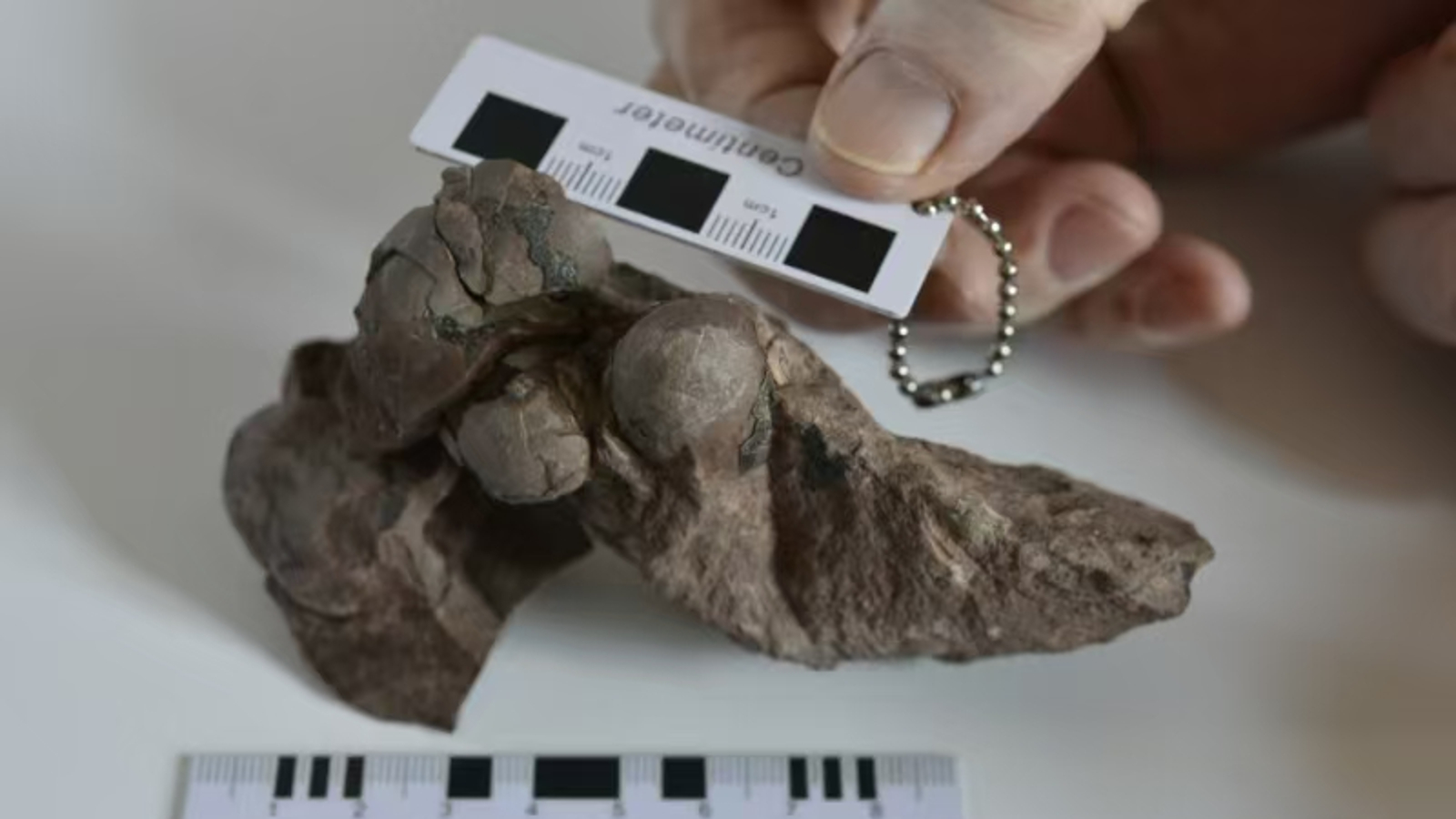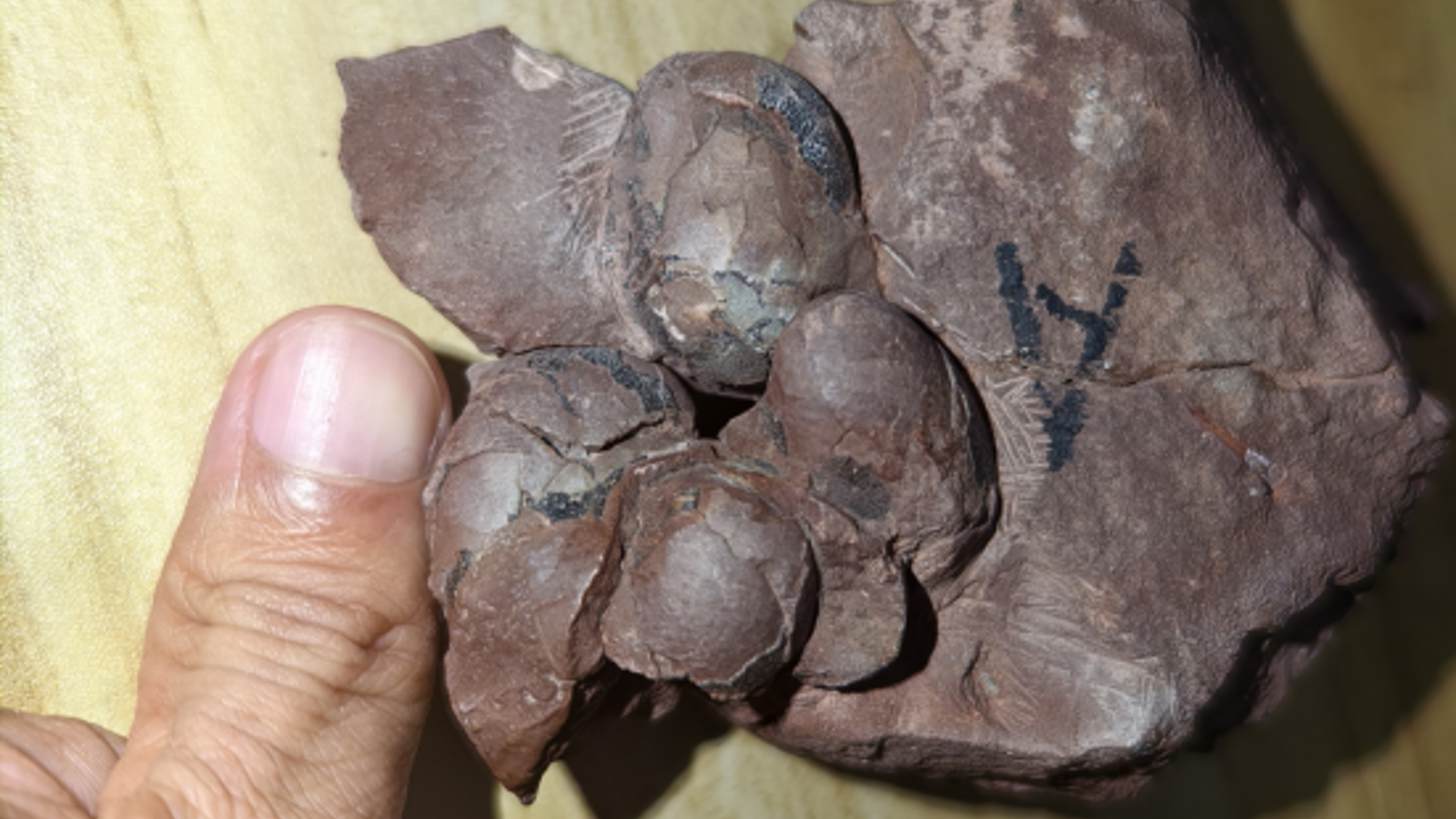
The smallest-ever nonavian dinosaur eggs have been unearthed in China and assigned to a never-before-seen species. The tiny paleontological treasures, each about the size of a grape, were unearthed at a construction site just days from being potentially destroyed by building work.
The six tiny eggs were recovered during a field survey of a construction site near Ganzhou in southeastern China in 2021, Chinese state media reported. The fossilized shells, known as the "Ganzhou mini eggs," were irregularly arranged within a lump of rock, making it hard to determine if they were part of a single nest. The rock dates back roughly 80 million years, to the Cretaceous period (145 million to 66 million years ago).
The smallest egg is 1.1 inches (2.9 centimeters) long, smashing the previous record for the smallest nonavian dinosaur egg, which was held by an egg recovered from Japan. That one was laid by the chicken-size dinosaur Himeoolithus murakamii around 110 million years ago and measured 1.8 inches (4.5 cm), according to Guinness World Records. For comparison, the newly uncovered eggs are around half as long as most chicken eggs.
In a study published Oct. 14 in the journal Historical Biology, researchers revealed that the eggs likely belong to a never-before-seen species of nonavian theropod dinosaur — a group of bipedal, largely predatory dinosaurs such as Tyrannosaurus rex — that they named Minioolithus ganzhouensis. It is currently unclear how large M. ganzhouensis would have grown after hatching.
Related: 'Rarest of the rare' dinosaur fossil found brooding on its eggs

The tiny eggs are exceptionally well preserved. Detailed analysis of the fossilized shells using scanning electron microscopy revealed that the internal structure of the eggs has remained almost completely intact.
Future studies on these eggs could reveal more about the reproductive biology of Late Cretaceous theropod dinosaurs, study co-author Fenglu Han, a paleontologist at China University of Geosciences in Wuhan, said in a translated statement.
Dinosaur eggs vary widely in shape and size, and their size doesn't always predict how large the species that laid them could grow. For example, some ornithopods, or duck-billed dinosaurs, laid eggs that were 5.4 inches (13.7 cm) long, while some titanosaurs — the largest creatures ever to walk on land — hatched from eggs that were just 5.9 inches (15 cm) long, despite growing up to four times longer than ornithopods.
The newly discovered eggs are extremely small but not quite as tiny as those laid by some of the last remaining dinosaurs — birds.
The record for the smallest known avian egg belongs to the vervain hummingbird (Mellisuga minima), whose eggs are as small as 0.4 inch (0.1 cm) long and lighter than a paper clip, according to Guinness World Records.




!["[T]he First and Fifth Amendments Require ICE to Provide Information About the Whereabouts of a Detained Person"](https://images.inkl.com/s3/publisher/cover/212/reason-cover.png?w=600)


